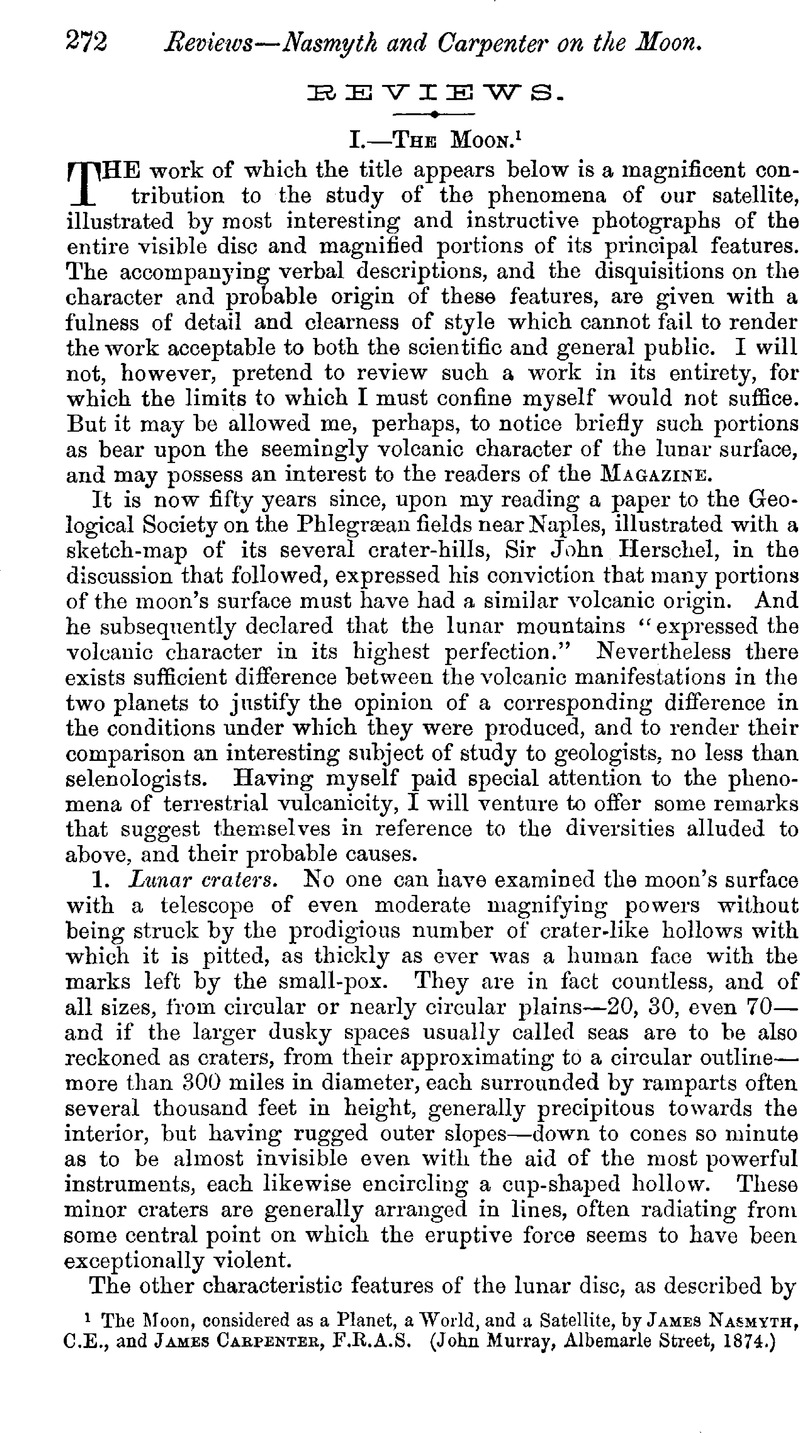No CrossRef data available.
Article contents
Abstract

- Type
- Reviews
- Information
- Copyright
- Copyright © Cambridge University Press 1874
References
page 272 note 1 The Moon, considered as a Planet, a World, and a Satellite, by James Nasmyth, C.E., and James Carpenter, F.R.A.S. (John Murray, Albemarle Street, 1874.)
page 279 note 1 A very simple experiment will illustrate to some extent the process to which I ascribe the formation of the lunar craters. If powdered Parian cement or plaster of Paris, mixed with water, of the depth of about half an inch, be placed in a common frying-pan on a hot stove, large bubbles will rise upon its surface, and in a short time Beveral vent-holes will establish themselves, by which the steam generated throughout the mass will escape with some violence; the lateral expansion of the escaping vapour forcing up the half-liquid matter into a circular wall round each vent. Soon the number of vents increases, the whole surface being covered with them. But the first formed are the largest, those later formed diminishing in size, and no two disturbing or interfering with one another. As the plaster dries and hardens, cracks establish themselves. And in the end the crowd of small craters, unequal in size, and not interfering with each other, produces a surface bearing a striking resemblance to portions of the moon's face. If such a surface were supposed to be pressed downwards upon a still liquid substratum, so as to force up some of this through the open vent-holes and cracks, to flood tbe surface more or less, and consolidate there under the same circumstances as the original matter, the resemblance would be still closer, leading to the belief that the moon's surface owes its characteristic features to some similarly rapid ebullition of a quickly-hardening semi-liquid matter.


